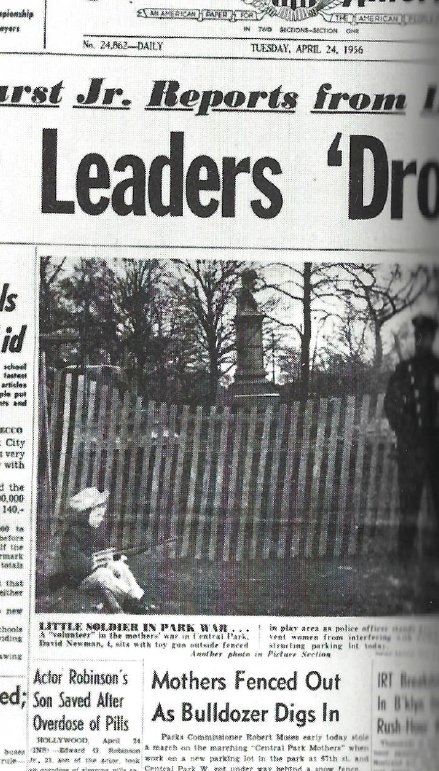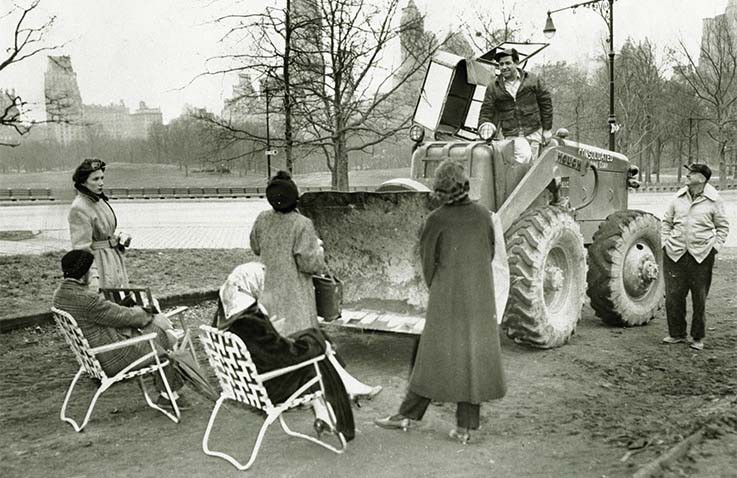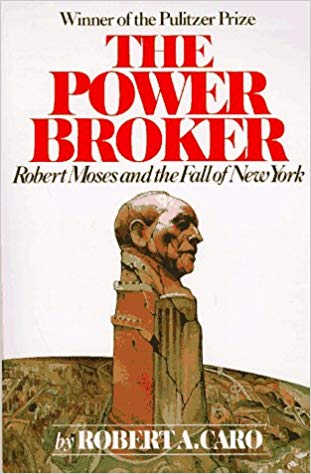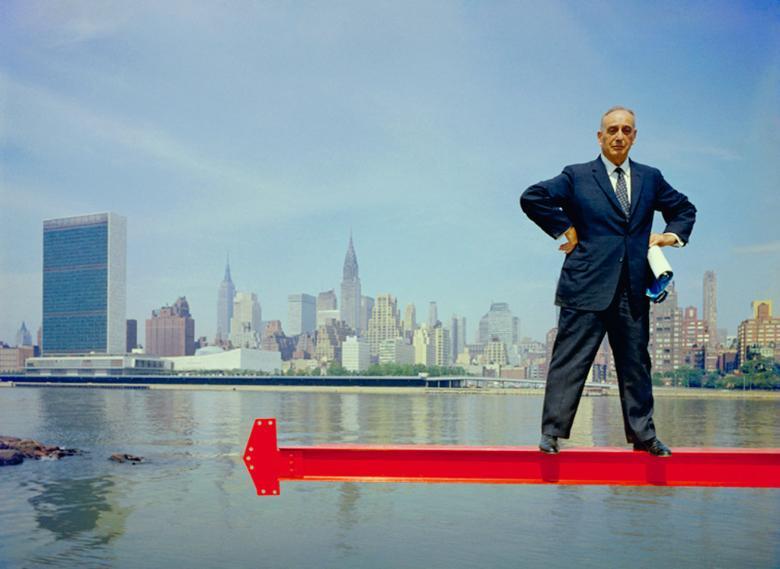Chapter 42 – Tavern in the Town
This chance came when an engineer left his blueprints in a little glen in Central Park. This place was popular with mothers and children, despite being disfigured by a restaurant and carpark by one of Moses’s schemes. It was the centre of the local neighbourhood.
One day, one of the mothers saw some surveyors in the glen. After they had left she walked over and picked up a blueprint they had left behind. The blueprint was for a new carpark to be built on the glen.

When a petition was raised, some notable residents in the area added their names. One of the mothers’ husband was a reporter, who pushed the story. Initially, Moses ignored the protests and planned to go ahead with the development. Twenty-three mothers protesting about a small glen was nothing to worry about, seeing as he had already displaced thousands of mothers building his highways. The Deputy Mayor was interested however.
This protest was different. The protestors were well-heeled, including a number of lawyers, and the issue was clear-cut. A park was being torn up for a carpark serving a posh private restaurant. Central Park was special to New York, frequented by some of its most influential residents. It was also a positive symbol, championed by the press, proclaiming that every part of it was sacred. Not even Moses could convince the city that this was a good idea.
Work started in April 1956. Residents who overlooked the park noticed a bulldozer. A group of women rushed out and went to the site, stopping the earth-moving machine. Reporters and photographers arrived from many papers and media outlets. Within hours, the story was on every TV newscast. The headline became “The Battle of Central Park.” The tactics Moses was using were the tactics he had used for thirty years. But this time, the whole city was aware of it.
For Moses, things had gone far enough. The builders came back under cover of darkness. They surrounded the site with a fence and then the bulldozer arrived. By the time daylight arrived, a tree had already been felled. The women surrounded the site in tears. Papers labelled the Parks Commissioner a bully. The pictures taken were just as devastating to Moses’s reputation. Weeping women were on the front page of every newspaper, dripping of drama and pathos. On a single day, Mayor Wagner received four thousand letters. The image of Moses had been maintained for decades, but now the image was cracked. For the first time he had been portrayed not as a creator but as a destroyer.

This did not stop the work going ahead. An injunction was granted to the mothers, temporarily stopping the work. Moses was confident that this setback was purely temporary, but the lawyers were at work. Any restaurant in the park was meant to be affordable. When the prices of the new restaurant were shown to be far beyond the means of most New Yorkers, another weapon was available to thwart the plan. On top of that, the profits made by the owner of the Tavern on the Green were shown to be the result of paying minimal rent, a concession from Moses. The hint of scandal was in the air.
While Moses blithely went on holiday, the protests raged behind him. The Mayor came into the firing line. The criticism became more wide ranging. The slum clearances were highlighted. On Moses’s return he was door-stepped by the press. His temper broke. He criticised the protestors with his usual vitriol, but this time the protesters were able to respond. Worst was to come. A trial look set to go ahead and many other Moses projects were likely to be aired. For once, Moses had to back down. He hatched a plan with the city council to delay the work to let the furore die down and then offer to build a new playground rather than a car park. The Tavern on the Green fight was over, but Moses’s reputation was never to be regained.
Analysis & Key Takeaways
- Moses miscalculated the power of the mothers and the press. Robert Moses went so far as to attack the mothers of Central Park to prevent them from taking down his plans. And there was a television debate with Bob Moses where he said one of the key protesters didn’t even have children so what does she know. And that obviously backfired;
- Political organizing was becoming a thing. This furore was a critical moment because the democratic forces were able to channel their dis-approval into the mainstream. Probably because of the race and gender of the protesters as well as the timing of liberation in the late 50s. Optics is democracy’s double-edged sword. Poorly informed but powerful in shutting down projects and progress because the flash of a camera bulb made the front pages of the broad-sheets.


